Papers by Daniel R . Schwartz
Early but Opposed - Supported but Late: Two Berlin Seminaries Which Attempted to Move Abroad
The Leo Baeck Institute Yearbook, 1991
... On the Hildesheimer circle and its institutions see, most recently, Mario Offenberg (ed.), Ad... more ... On the Hildesheimer circle and its institutions see, most recently, Mario Offenberg (ed.), Adass Jisroel, diejiidische Gemeinde in Berlin (1869-1942). Vernichtet und Vergessen, Berlin nd [1986?]. Page 3. Two Berlin Seminaries 269 ...
Shifting Images of the Hasmoneans: Second Temple Legends and Their Reception in Josephus and Rabbinic Literature, written by Vered Noam
Journal for the Study of Judaism, 2020
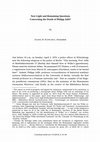
Just before 10 a.m. on Sunday, April 3, 1870, a police officer in Wittenberge sent the following ... more Just before 10 a.m. on Sunday, April 3, 1870, a police officer in Wittenberge sent the following telegram to the police of Berlin: "This morning, Prof. Jaffé of Matthäikirchstraße 27 [Berlin] shot himself here at Wilke's [guesthouse]. Please send his relations hither. He possessed 272 Thalers, a will (Testament), a registration form from March 22, and papers (Nachlass); wants to be buried here". 1 Indeed, Philipp Jaffé, professor extraordinarius of historical auxiliary sciences (Hilfswissenschaften) at the University of Berlin, virtually the first Jewish professor in a Prussian university and-first as compiler of his Regesta pontificum romanorum (1851), then as the mainstay of the Monumenta Germaniae Historica, 2 and finally as the creator of the Bibliotheca Rerum * This report on work-in-progress and appeal for assistance, summarized at its conclusion, is part of my work on producing a monograph about Philipp Jaffé and an anthology of his letters. The project is supported by grant no. 62/14 from the Israel Science Foundation.
Jewish Identity in the Greco-Roman World

Papers Presented at the IJS Conference, 21st-23rd June 2005
The reign of Herod, who was neither a priest nor a Roman, looks as if it were a neatly intermedia... more The reign of Herod, who was neither a priest nor a Roman, looks as if it were a neatly intermediate step between the Hasmonaean period, when Judaea was ruled by high priests, and the Roman period, when it was ruled by non-Jews. It also seems to be the beginning of the separation of religion from state in Judaea. In fact, things are not at all so neat and clear-cut. On the one hand, the Hasmonaeans had already introduced formal and real separation of religion from state-by adding the royal title to their high-priesthood, which allowed even for rule by a queen, and then by abandoning their earlier insistence that their non-Jewish subjects convert to Judaism. And Herod's reign, on the other hand, although it indeed continued and deepened this separation between the two spheres, nevertheless saw religion subject to the state. Herod appointed and switched high priests at will, preferring priests from the Diaspora who could be expected to have no political aspirations. Thus, Herod's main contribution to the religion/state issue in Judaea seems rather to have been elsewhere, and one despite himself. Namely, his expansion and renovation of the Temple, which turned it into something quite massive and impressive, exacerbated the contradiction between the continued existence of that which the Bible and Jewish tradition considered to be the House of God, i.e., the palace of the true King of the Judaea, on the one hand, and Roman rule, on the other. This contradiction generated the rebellion of 66 CE and the ensuing destruction of the Second Temple in 70 CE. Contemporary developments in Rome exacerbated the problem and contributed to the crisis. Namely, the decades of Herod's rule were also those of massive growth for the Jewish community of Rome, which comes into view especially in the latter half of the fi rst century BCE. This means that around the same time that Herod was providing the Jews with a visible and impressive symbol for the territorial nature of the Jews and their God, Jews in Rome were providing the emperors with more and more visible evidence for Judaism being something universal, and spiritual, without political aspirations and claims. So if once Romans could think of Jews only as Judaeans, by the days of Augustus, and into the fi rst century, Jews were, for Romans, more and more adherents of the Jewish religion-thus allowing Romans less and less understanding for the motivations of territorially-oriented Judaeans just as the latter were getting a more and more impressive symbol for their aspirations. It is no surprise that it all blew up within a few decades. For more than a century prior to Herod's reign, on the one hand, Judaea was ruled by high priests, that is, by people who ruled the state by virtue of their status vis-à-vis the Jewish God and function in His cult.
Perspectives encourages submissions of articles, announcements, and brief letters to the editor r... more Perspectives encourages submissions of articles, announcements, and brief letters to the editor related to the interests of our members. Materials submitted will be published at the discretion of the editors. AJS Perspectives reserves the right to reject articles, announcements, letters, advertisements, and other items not consonant with the goals and purposes of the organization. Copy may be condensed or rejected because of length or style. AJS Perspectives disclaims responsibility for statements made by contributors or advertisers.
The Dead Sea Scrolls: Forty Years of Reseach, 1992
Jewish Identities in Antiquity, 2009
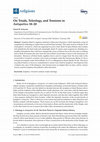
Religions, Jan 12, 2020
Josephus liked to organize material in three-part structures, which imparted a sense of completio... more Josephus liked to organize material in three-part structures, which imparted a sense of completion by indicating to readers that an end had been reached. This study focuses on Books 18-20 of Josephus's Antiquities, which are organized as such a triad: Book 18 opens Roman rule in Judea and adumbrates the final clash and catastrophe, Book 19 creates some suspense by detailing two possible interruptions that could have changed the course of history but in the end came to nothing, and so Book 20 resumes the story from the end of Book 18 and takes it down to the destruction of Jerusalem. Moreover, all three books, together, form a unit in a larger triad: the story told, in the second half of Antiquities, of Judea's move from sovereignty under the Hasmoneans (Books 12-14), to nominal sovereignty under Herod (Books 15-17), to subjugation to Rome (Books 18-20). This focus on political history is, however, contradicted in various ways, both by Josephus's development from a Judean into a Jew of the Diaspora, who focused more on religion than on state, and by various sources used by Josephus, that pulled in other directions.
Haggadah in Early Judaism and the New Testament , 2021
This book may not be reproduced, in whole or in part, in any form (beyond that permitted by copyr... more This book may not be reproduced, in whole or in part, in any form (beyond that permitted by copyright law) without the publisher's written permission. This applies particularly to reproductions, translations and storage and processing in electronic systems.
Jerusalem and Eretz Israel, 2020
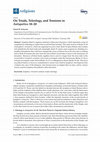
Religions, 2020
Josephus liked to organize material in three-part structures, which imparted a sense of completio... more Josephus liked to organize material in three-part structures, which imparted a sense of completion by indicating to readers that an end had been reached. This study focuses on Books 18-20 of Josephus's Antiquities, which are organized as such a triad: Book 18 opens Roman rule in Judea and adumbrates the final clash and catastrophe, Book 19 creates some suspense by detailing two possible interruptions that could have changed the course of history but in the end came to nothing, and so Book 20 resumes the story from the end of Book 18 and takes it down to the destruction of Jerusalem. Moreover, all three books, together, form a unit in a larger triad: the story told, in the second half of Antiquities, of Judea's move from sovereignty under the Hasmoneans (Books 12-14), to nominal sovereignty under Herod (Books 15-17), to subjugation to Rome (Books 18-20). This focus on political history is, however, contradicted in various ways, both by Josephus's development from a Judean into a Jew of the Diaspora, who focused more on religion than on state, and by various sources used by Josephus, that pulled in other directions.
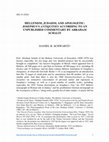
Jewish Studies Internet Journal, 2020
(1898-1979) was known, especially, for two large and very detailed projects that he successfully ... more (1898-1979) was known, especially, for two large and very detailed projects that he successfully brought to completion: 1 his massive biography of Herod, which appeared first in Hebrew, all 500 pages of it, and then in German, all 900 pages of it, including 48 Zusätze and 15 Anhänge; and his three-volume Hebrew translation of Josephus's Antiquities, of which the first half, Books 1-10, is accompanied by an introduction that fills 72 pages of small print and by annotations that fill another 163 in even smaller print. And then there is also his 1968 Namenwörterbuch zu Flavius Josephus-an exhaustive concordance of personal names and toponyms in Josephus's writings, as well as a good number of smaller works, including, especially, his 1925 Vienna dissertation on Josephus's Vita, 2 his 1937 Hebrew monograph on Roman rule in Judaea, 3 and his posthumous German monograph on the Assumption of Moses, 4 along with a goodly list of other studies. A nearly full list

Journal for the Study of Judaism, 2020
This book grew out of a larger collaborative project, headed by Noam together with Tal Ilan, that... more This book grew out of a larger collaborative project, headed by Noam together with Tal Ilan, that culminated in the two Hebrew volumes of Josephus and the Rabbis.1 Those hefty volumes, of which the first is dedicated to stories of the Second Temple period and the second to stories about the destruction of the Second Temple, trace the antecedents, and transformations along the way, of stories found in the writings of Josephus and in rabbinic literature. The six case-studies selected for the present volume bespeak and illustrate the same interest, but, given their common subject matter, also combine to enrich our understanding of ancient Jewish views of the Hasmoneans. The six studies, which are accompanied by a programmatic introduction and a new synthetizing concluding chapter on "The Image of the Hasmoneans: A New Perspective," deal, in chronological order, with six stories about the Hasmoneans that appear in Books 12-14 of Josephus's Antiquities and in rabbinic literature: the defeat of Nicanor; the heavenly voice heard by John Hyrcanus; the Hasmoneans' rupture with the Pharisees; the pelting of Alexander Yannai with citrons; Yannai's deathbed instructions to his wife; and the conflict between Yannai's sons and attendant death of Onias. Five of these six correspond to chapters by Noam in the Hebrew compendium and are, basically, revised translations of them; the one on Yannai's deathbed instructions to his wife was analyzed in the Hebrew compendium by Tal Ilan, and so Noam's study of it here is new. All of the studies are offered in support of the hypothesis that the rabbis did not use Antiquities, but, rather, that both Josephus and the rabbis made use of the same traditions, which-in all but one of the cases-are otherwise lost. The one exceptional case is the first, the defeat of Nicanor, for which an older version survives in 1 Maccabees 7, and Noam can therefore compare it separately to Josephus's version and to the rabbinic versions. In each case, the stories are presented in English translation and explained (including frequent reference to biblical allusions), and they are put in the historical context to which they refer. Noam's main objective is to show that the surviving witnesses depend on the same sources or traditions, and to analyze how the changes they underwent reflect the interests of the respective tradents. Most of the demonstration, that stories in Josephus and rabbinic literature depend on the same sources, is based on the application of two reasonable and venerable rules of thumb. First: the more a story in Josephus disrupts its context, or uses surprising or anomalous wording, the likelier it is that he did not create it himself but, rather, inserted it as a unit, from a source or tradition

Revue de Qumran, 2020
It is quite evident that Qumran Hebrew deserves its very own place as a sub-discipline within the... more It is quite evident that Qumran Hebrew deserves its very own place as a sub-discipline within the wider field of (Biblical) Hebrew study. The inertia that this sub-field has picked up in recent years has, at least in part, been due to the International Symposia on the Hebrew of the Dead Sea Scrolls and Ben Sira, which, since 1995, have served as a forum for ongoing discussion about the linguistic features of the Hebrew texts found at Qumran. This particular volume constitutes the proceedings of the Seventh International Symposium held in Strasbourg from June 22-25, 2014. Interest in the multiplicity of Hebrew traditions of the Middle Ages and those from antiquity has been growing in recent years. Indeed, scholarship is beginning to distance itself from the (perhaps only subconscious) view that sees Tiberian Hebrew and Biblical Hebrew as interchangeable terms. The four-year gap between the 2014 symposium and its publication was even witness to the Handbook of Biblical Hebrew (R. Garr and S. Fassberg [eds.], Winona Lake, IN: Eisenbrauns, 2016), a two-volume work which brings together a wide array of Biblical Hebrew traditions side-by-side. All of this is to say that, while it may have been possible in the past, scholars of Biblical Hebrew can no longer afford to ignore the multiplicity and diversity of traditions from the medieval and ancient periods. It is no surprise, then, that the language tradition(s) of the Qumran scrolls should hold a monumental place among those of antiquity. The present volume is therefore a very welcome contribution in this ever-growing sub-discipline of (Biblical) Hebrew studies. The book itself contains fourteen papers on a variety of topics, all of them linguistic in one way or another. Although a number of the papers argue persuasively for one particular linguistic point or another, a surprising number of them conclude by leaving the reader with a significant degree of uncertainty, or they do not include a concluding section at all (e.g., Muraoka). In the view

Australian Jewish Historical Society Journal, 2020
According to a story that is popular in religious Jewish circles, the HMT Dunera, transporting Ge... more According to a story that is popular in religious Jewish circles, the HMT Dunera, transporting Germanspeaking Jewish internees to Australia in the summer of 1940, was miraculously saved from destruction because the captain of a German submarine discontinued his torpedo attack on the ship. He did so because he inferred, from German-language materials in suitcases floating in the sea behind the Dunera, that the ship was full of German POWs. In fact, however, the ship was full of Jewish internees, whose suitcases had been thrown overboard by corrupt and cruel British guards. Thus, the story illustrates the wondrous ways of divine providence and, accordingly, man's inability to judge God's administration of events, for what the internees perceived as a catastrophe, namely the loss of their property, was in fact the instrument of their salvation. This study of the story's origin, and of its growth and perfection over time, focuses on two points: (1) over time, the authority claimed for the story has become less and less susceptible to corroboration (and, hence, to refutation); (2) those who tell the story are not liars,
in Strength to Strength: Essays in Honor of Shaye J. D. Cohen, 2018

Sources and Interpretation in Ancient Judaism: Studies for Tal Ilan at Sixty , 2018
Perhaps a note sorting out some Herodians, and on the significance of ascribing them to this or t... more Perhaps a note sorting out some Herodians, and on the significance of ascribing them to this or that mother, will be an appropriate contribution to a volume in honour of a scholar who has devoted so much work both to names and to women in Jewish antiquity. Of Herod's three main heirs, Archelaus, Herod Antipas, and Philip, the first two are said to have been full brothers, the sons of Herod and his Samaritan wife, Malthace. Philip, in contrast, is said to have been their half-brother: son of Herod and a Jerusalemite named Cleopatra. Josephus states all of that explicitly in both versions of his table that sets out Herod's nine wives and their progeny (B.J. 1.562 and Ant. 17.20-21), and it is repeated without hesitation in all the literature about Herod and Herodian family trees of which I am aware.1 However, there are four passages, all in the context of the succession dispute that followed Herod's death, of which the plain reading contradicts the notion that Archelaus and Herod Antipas were full brothers. Moreover, the first of them instead asserts that Philip was Archelaus's full brother.



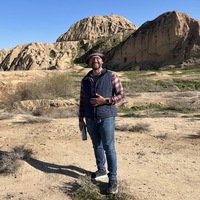







Uploads
Papers by Daniel R . Schwartz